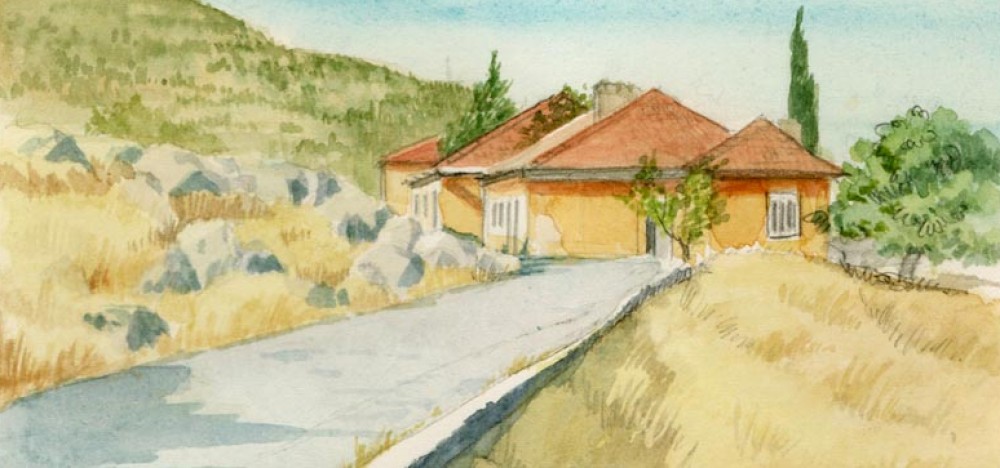I’ve often heard stories of doctors whose understanding of medicine is seriously altered when they, themselves, become the patient. Although I’m not a health professional, these days post-surgery have given me an inside view of the role of caregiver I’ve played in the past, particularly with the issue of pain management.
I’ve seen both my husband and my father through terminal cancer. Both experiences involved wading through a labyrinth of narcotic drugs that allowed them to function normally – awake and aware, but also comfortable. It’s a tricky spectrum between pain on one extreme and unconsciousness on the other. Somewhere in between lies a near normal existence – quality of life – but just a tweak away from that lurk disturbing waking dreams and hallucinations. Now, add in the cautionary tales of narcotic addiction and you have patients who are often reluctant to accept enough medication to treat pain effectively and so are constantly stressed and distant.
Having experienced this from the front lines, if not first-hand, I was determined to use everything I’d learned now that it was my turn to be the patient. At my pre-op appointment I listened intently to the explanation of the pain pump, certain that I’d make proper use of it, determined to accept all comfort offered and not to tough it out.
It’s not that easy.
I have a vague recollection of waking post-surgery, swimming up through a miasma of confusion to the surface of consciousness. It took a few moments to re-orient and realize that this cloud I inhabited was, actually, pain. It took a few more moments to locate the promised little bell-shaped button placed strategically under my hand. I remember a satisfying ‘beep’ and when I next surfaced, I was being wheeled into my room – fuzzy, but not hurting. So I got that step right.
I only had my little bell-shaped friend for two nights. That was more than enough time to realize the complexity of narcotic use. My pain was managed, no problem there; I never again experienced the overwhelming level I had on first awakening. Too many beeps of the precious bell brought on serious nausea. Manage the nausea (more drugs) – good – but I couldn’t help but nod off during a conversation. I finally found the sweet spot: comfortable, awake and no longer nauseous. However, at no point in the four days of my hospital stay was there an end to the relentless re-decorating of my room every time I closed my eyes!
Years ago my father had a kidney removed. When visiting him in hospital, he urgently asked for a sketchbook so that he could draw the tree he’d been watching all day from bed. Looking out his window, we made appropriately admiring noises about the view. Impatiently, Dad redirected our attention toward the blank wall in front of him, vividly describing the spreading branches and the birds and squirrels he saw moving among them. Even after he was persuaded that there was no window there and no tree, his vision persisted for several days. In spite of his acceptance that it really wasn’t “there”, he would look over our heads to watch the unfolding tableau during visits.
Following my husband’s radiation treatments, I rose one morning to find him absent from bed. I followed a trail of discarded tissues to find him ensconced on our basement stairs where he’d kept vigil through the early morning hours, awaiting the arrival of a submarine carrying drugs from Holland – a set-up deal meant to entrap his brother. He’d been waiting until it was late enough to call Matthew to warn him. (An aside here: Matthew is the pastor of a church, not a drug runner!) It took a great deal of persuasion to convince Craig that no Dutch submarines were due to surface in our bathroom closet. Craig once confided to our daughter that while some people saw faces in the folds of a towel or a wallpaper pattern, with morphine he saw entire movies.
In the dark days of Craig’s illness, I whisked my children and their friends off for a day of respite at the beach. Coincidentally, both of the friends were also dealing with cancer in their families. At some point, the submarine story emerged and for the rest of the ride the kids exchanged tales of the effects of morphine – a cathartic, therapeutic and totally unexpected bright window of hilarity during a difficult time.
So, for me, narcotics brought bizarre décor. The best variation was a post-modernist room with an extended recessed window, the facing wall painted a tasteful aubergine. The worst was a room draped entirely in chocolate-coloured satin. Consciously, I knew the actual dimensions and colours of my room, but, opening and closing my eyes, could flip between one and the other. In memory, all the versions seem equally “real.”
Nearly three weeks since the surgery, I’m drug free, save for an occasional Tylenol. I’m grateful for the efficacy of analgesic medicines – for my own comfort and also for the ‘normal’ time granted my husband and father.The advice I was constantly relaying to them held true. Get on top of the pain early, don’t be a martyr – it will be easier to control. Then deal with the side effects until you find the balance. Match the meds to the pain level, and the spectre of addiction needn’t materialize.
Meanwhile? Enjoy the hilarity – and the bad décor.
